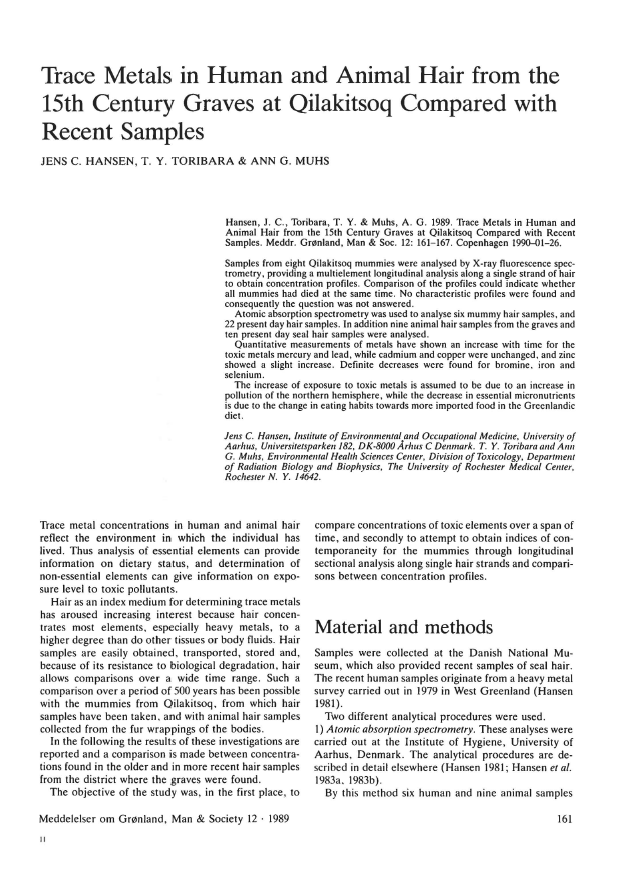Trace metals in human and animal hair from the 15th century graves at Qilakitsoq compared with Recent samples
DOI:
https://doi.org/10.7146/mog-ms.v12.146614Abstract
Samples from eight Qilakitsoq mummies were analysed by X-ray fluorescence spectrometry, providing a multielement longitudinal analysis along a single strand of hair to obtain concentration profiles. Comparison of the profiles could indicate whether all mummies had died at the same time. No characteristic profiles were found and consequently the question was not answered.
Atomic absorption spectrometry was used to analyse six mummy hair samples, and 22 present day hair samples. In addition nine animal hair samples from the graves and ten present day seal hair samples were analysed. Quantitative measurements of metals have shown an increase with time for the toxic metals mercury and lead, while cadmium and copper were unchanged, and zinc showed a slight increase. Definite decreases were found for bromine. iron and selenium.
The increase of exposure to toxic metals is assumed to be due to an increase in pollution of the northern hemisphere, while the decrease in essential micronutrients is due to the change in eating habits towards more imported food in the Greenlandic diet.

Downloads
Published
Issue
Section
License
Coypyright by the authors and the Commision for Scientific Research in Greenland / Danish Polar Center/Museum Tusculanum Press as indicated in the individual volumes. No parts of the publications may be reproduced in any form without the written permission by the copyright owners.
